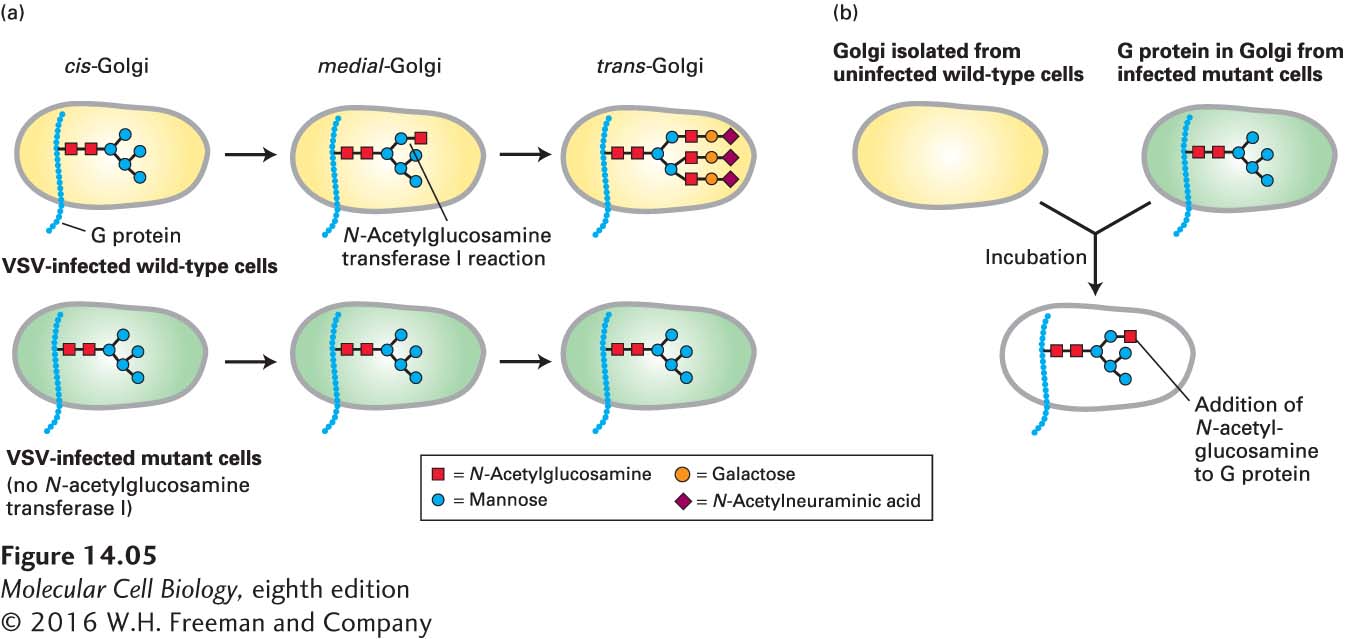
EXPERIMENTAL FIGURE 14- 5 A cell- free assay demonstrates protein transport from one Golgi cisterna to another. (a) A mutant line of cultured fibroblasts is essential in this type of assay. In this example, the cells lack the enzyme N-acetylglucosamine transferase I (see step 2 in Figure 14- 14 below). In wild- type cells, this enzyme is localized to the medial-Golgi and modifies N-linked oligosaccharides by the addition of one N-acetylglucosamine. In VSV- infected wild- type cells, the oligosaccharide on the viral G protein is modified to a typical complex oligosaccharide, as shown in the trans-Golgi panel. In infected mutant cells, however, the G protein reaches the cell surface with a simpler high- mannose oligosaccharide containing only two N-acetylglucosamine and five mannose residues. (b) When Golgi cisternae isolated from infected mutant cells are incubated with Golgi cisternae from normal, uninfected cells, the VSV G protein produced in vitro contains the additional N-acetylglucosamine. This modification is carried out by transferase enzyme that is moved by transport vesicles from the wild- type medial-Golgi cisternae to the mutant cis-Golgi cisternae in the reaction mixture. See W. E. Balch et al., 1984, Cell 39:405 and 525; W. A. Braell et al., 1984, Cell 39:511; and J. E. Rothman and T. Söllner, 1997, Science 276:1212.
[Leave] [Close]